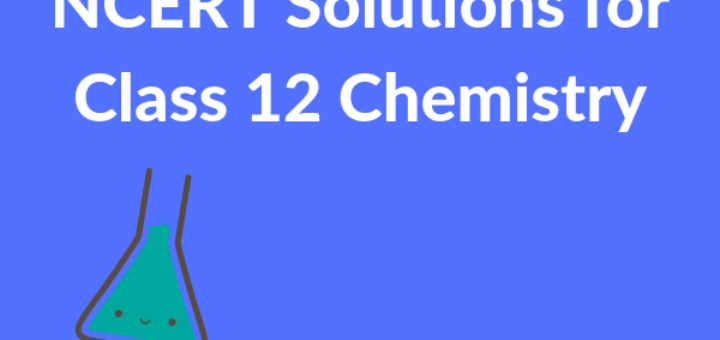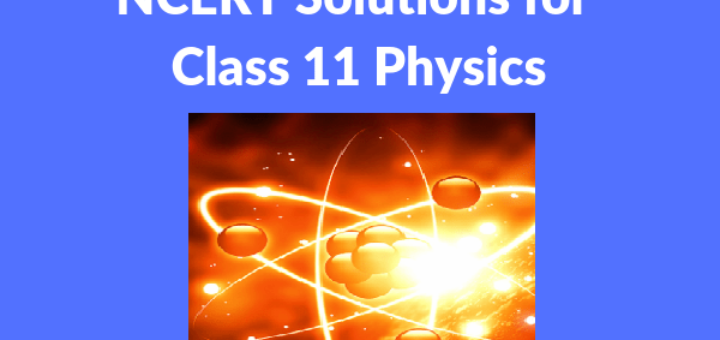Page No 289:
Question 1:
Name the components of the formed elements in the blood and mention one major function of each of them.
Answer:
The component elements in the blood are:
(1) Erythrocytes:
They are the most abundant cells and contain the red pigment called haemoglobin. They carry oxygen to all parts of the body. Red blood cells are produced continuously in some parts of the body such as the marrow of long bones, ribs, etc. There are about 4 – 6 million RBCs per cubic millimetre of blood.
(2) Leukocytes
Leucocytes are colourless cells. These cells do not contain haemoglobin. They are the largest cells of the body and are divided into two main categories.
(a) Granulocytes
These leucocytes have granules in their cytoplasm and include neutrophils, eosinophils, and basophiles. Neutrophils are phagocytic cells that protect the body against various infecting agents. Eosinophils are associated with allergic reactions, while basophiles are involved in inflammatory responses.
(b) Agranulocytes
Lymphocytes and monocytes are agranulocytes. Lymphocytes generate immune responses against infecting agents, while monocytes are phagocytic in nature.
(3) Platelets
Platelets are small irregular bodies present in blood. They contain essential chemicals that help in clotting. The main function of platelets is to promote clotting.
Question 2:
What is the importance of plasma proteins?
Answer:
Plasma is the colourless fluid of blood which helps in the transport of food, CO2, waste products, and salts. It constitutes about 55% of blood. About 6.8% of the plasma is constituted by proteins such as fibrinogens, globulins, and albumins.
Fibrinogen is a plasma glycoprotein synthesised by the liver. It plays a role in the clotting of blood.
Globulin is a major protein of the plasma. It protects the body against infecting agents.
Albumin is a major protein of the plasma. It helps in maintaining the fluid volume within the vascular space.
Question 3:
Match column I with column II:
| Column I | Column II | ||
| (a) | Eosinophils | (i) | Coagulation |
| (b) | RBC | (ii) | Universal Recipient |
| (c) | AB Group | (iii) | Resist Infections |
| (d) | Platelets | (iv) | Contraction of Heart |
| (e) | Systole | (v) | Gas transport |
Answer:
| Column I | Column II | ||
| (a) | Eosinophils | (iii) | Resist infections |
| (b) | RBC | (v) | Gas transport |
| (c) | AB Group | (ii) | Universal Recipient |
| (d) | Platelets | (i) | Coagulation |
| (e) | Systole | (iv) | Contraction of heart |
Question 4:
Why do we consider blood as a connective tissue?
Answer:
Connective tissues have cells scattered throughout an extra-cellular matrix. They connect different body systems. Blood is considered as a type of connective tissue because of two reasons.
(i) Like the other connective tissues, blood is mesodermal in origin.
(ii) It connects the body systems, transports oxygen and nutrients to all the parts of the body, and removes the waste products. Blood has an extra-cellular matrix called plasma, with red blood cells, white blood cells, and platelets floating in it.
Question 5:
What is the difference between lymph and blood?
Answer:
| Lymph | Blood | ||
| 1. | It is a colourless fluid that does not contain RBCs. | 1. | It is a red-coloured fluid that contains RBCs. |
| 2. | It contains plasma and lesser number of WBCs and platelets. | 2. | It contains plasma, RBCs, WBCs, and platelets. |
| 3. | It helps in body defence and is a part of the immune system. | 3. | It is associated with the circulation of oxygen and carbon dioxide. |
| 4. | Its plasma lacks proteins. | 4. | Its plasma has proteins, calcium, and phosphorus. |
| 5. | It transports nutrients from the tissue cells to the blood, through lymphatic vessels. | 5. | It transports nutrients and oxygen from one organ to another. |
| 6. | The flow of lymph is slow. | 6. | The flow of blood in the blood vessels is fast. |
Question 6:
What is meant by double circulation? What is its significance?
Answer:
Double circulation is a process during which blood passes twice through the heart during one complete cycle. This type of circulation is found in amphibians, reptiles, birds, and mammals. However, it is more prominent in birds and mammals as in them the heart is completely divided into four chambers – the right atrium, the right ventricle, the left atrium, and the left ventricle.
The movement of blood in an organism is divided into two parts:
(i) Systemic circulation
(ii) Pulmonary circulation
Systemic circulation involves the movement of oxygenated blood from the left ventricle of the heart to the aorta. It is then carried by blood through a network of arteries, arterioles, and capillaries to the tissues. From the tissues, the deoxygenated blood is collected by the venules, veins, and vena cava, and is emptied into the left auricle.
Pulmonary circulation involves the movement of deoxygenated blood from the right ventricle to the pulmonary artery, which then carries blood to the lungs for oxygenation. From the lungs, the oxygenated blood is carried by the pulmonary veins into the left atrium.
Hence, in double circulation, blood has to pass alternately through the lungs and the tissues.
Significance of double circulation:
The separation of oxygenated and deoxygenated blood allows a more efficient supply of oxygen to the body cells. Blood is circulated to the body tissues through systemic circulation and to the lungs through pulmonary circulation.
Question 7:
Write the differences between:
(a) Blood and Lymph
(b) Open and Closed system of circulation
(c) Systole and Diastole
(d) P-wave and T-wave
Answer:
(a) Blood and lymph
| Blood | Lymph | ||
| 1. | Blood is a red-coloured fluid that contains RBCs. | 1. | Lymph is a colourless fluid that lacks RBCs. |
| 2. | It contains plasma, RBCs, WBCs, and platelets. It also contains proteins. | 2. | It contains plasma and lesser number of WBCs and platelets. It lacks proteins. |
| 3. | Blood transports nutrients and oxygen from one organ to another. | 3. | Lymph plays a role in the defensive system of the body. It is a part of the immune system. |
(b) Open and closed systems of circulation
| Open system of circulation | Closed system of circulation | ||
| 1. | In this system, blood is pumped by the heart, through large vessels, into body cavities called sinuses. | 1. | In this system, blood is pumped by the heart, through a closed network of vessels. |
| 2. | The body tissues are in direct contact with blood. | 2. | The body tissues are not in direct contact with blood. |
| 3. | Blood flows at low pressure. Hence, it is a slower and less efficient system of circulation. | 3. | Blood flows at high pressure. Hence, it is a faster and more efficient system of circulation. |
| 4. | The flow of blood is not regulated through the tissues and organs. | 4. | The flow of blood can be regulated by valves. |
| 5. | This system is present in arthropods and molluscs. | 5. | This system is present in annelids, echinoderms, and vertebrates. |
(c) Systole and diastole
| Systole | Diastole | ||
| 1. | It is the contraction of the heart chambers to drive blood into the aorta and the pulmonary artery. | 1. | It is the relaxation of the heart chambers between two contractions. During diastole, the chambers are filled with blood. |
| 2. | Systole decreases the volume of the heart chambers and forces the blood out of them. | 2. | Diastole brings the heart chambers back into their original sizes to receive more blood. |
(d) P-wave and T-wave
| P-wave | T-wave | ||
| 1. | In an electrocardiogram (ECG), the P-wave indicates the activation of the SA node. | 1. | In an electrocardiogram (ECG), the T-wave represents ventricular relaxation. |
| 2. | During this phase, the impulse of contraction is generated by the SA node, causing atrial depolarisation. | 2. | During this phase, the ventricles relax and return to their normal state. |
| 3. | It is of atrial origin. | 3. | It is of ventricular origin. |
Question 8:
Describe the evolutionary change in the pattern of heart among the vertebrates.
Answer:
All vertebrates possess a heart – a hollow muscular organ composed of cardiac muscle fibres. The function of the heart is to pump oxygen to all parts of the body. The evolution of the heart is based on the separation of oxygenated blood from deoxygenated blood for efficient oxygen transport.
In fishes, the heart was like a hollow tube. This evolved into the four-chambered heart in mammals.
Piscean heart Fish has only two chambers in its heart – one auricle and one ventricle. Since both the auricle and the ventricle remain undivided, only deoxygenated blood passes through it. The deoxygenated blood enters the gills for oxygenation from the ventricle. It has additional chambers such as sinus venosus and conus arteriosus.
Amphibian heart Amphibians, such as frogs, have three-chambered hearts, with two auricles and one ventricle. The auricle is divided into a right and a left chamber by an inter-auricular septum, while the ventricle remains undivided. Additional chambers such as sinus venosus and conus arteriosus are also present. The oxygenated blood from the lungs enters the left auricle and simultaneously, the deoxygenated blood from the body enters the right auricle. Both these auricles empty into the ventricle, wherein the oxygenated and deoxygenated blood get mixed to some extent.
Reptilian heart Reptiles have incomplete four-chambered hearts, except for crocodiles, alligators, and gharials. They have only one accessory chamber called sinus venosus. The reptilian heart also shows mixed blood circulation.
Avian and mammalian hearts They have two pairs of chambers for separating oxygenated and deoxygenated bloods. The heart is divided into four chambers. The upper two chambers are called atria and the lower two chambers are called ventricles. The chambers are separated by a muscular wall that prevents the mixing of the blood rich in oxygen with the blood rich in carbon dioxide.
Question 9:
Why do we call our heart myogenic?
Answer:
In the human heart, contraction is initiated by a special modified heart muscle known as sinoatrial node. It is located in the right atrium. The SA node has the inherent power of generating a wave of contraction and controlling the heart beat. Hence, it is known as the pacemaker. Since the heart beat is initiated by the SA node and the impulse of contraction originates in the heart itself, the human heart is termed myogenic. The hearts of vertebrates and molluscs are also myogenic.
Question 10:
Sino-atrial node is called the pacemaker of our heart. Why?
Answer:
The sino-atrial (SA) node is a specialised bundle of neurons located in the upper part of the right atrium of the heart. The cardiac impulse originating from the SA node triggers a sequence of electrical events in the heart, thereby controlling the sequence of muscle contraction that pumps blood out of the heart. Since the SA node initiates and maintains the rhythmicity of the heart, it is known as the natural pacemaker of the human body.
Question 11:
What is the significance of atrio-ventricular node and atrio-ventricular bundle in the functioning of heart?
Answer:
The atrioventricular (AV) node is present in the right atrium, near the base of the inter-auricular septum that separates the right auricle from the ventricle. It gives rise to the bundle of His that conducts the cardiac impulses from the auricles to the ventricles. As the bundle of His passes the ventricle along the inter-ventricular septum, it divides into two branches – the right ventricle and the left ventricle.
The end branches of this conducting system then forms a network of Purkinje fibres that penetrate into the myocardium. The auricular contraction initiated by the wave of excitation from the sino-atrial node (SA node) stimulates the atrio-ventricular node, thereby leading to the contraction of ventricles through the bundle of His and Purkinje fibres. Hence, the atrio-ventricular node and the atrioventricular bundle play a role in the contraction of ventricles.
Question 12:
Define a cardiac cycle and the cardiac output.
Answer:
Cardiac cycle is defined as the complete cycle of events in the heart from the beginning of one heart beat to the beginning of the next. It comprises three stages – atrial systole, ventricular systole, and complete cardiac diastole.
Cardiac output is defined as the amount of blood pumped out by the ventricles in a minute.
Question 13:
Explain heart sounds.
Answer:
Heart sounds are noises generated by the closing and opening of the heart valves. In a healthy individual, there are two normal heart sounds called lub and dub. Lub is the first heart sound. It is associated with the closure of the tricuspid and bicuspid valves at the beginning of systole. The second heart sound dub is associated with the closure of the semilunar valves at the beginning of diastole.
These sounds provide important information about the condition and working of the heart.
Question 14:
Draw a standard ECG and explain the different segments in it.
Answer:
Electrocardiogram is a graphical representation of the cardiac cycle produced by an electrograph.
The diagrammatic representation of a standard ECG is shown below.
A typical human electrocardiogram has five waves – P, Q, R, S, and T. The P, R, and T-waves are above the base line and are known as positive waves. The Q and S-waves are below the base line and are known as negative waves. The P-wave is of atrial origin, while the Q, R, S, and T-waves are of ventricular origin.
(a) The P-wave indicates atrial depolarisation. During this wave, the impulse of contraction is generated by the SA node. The PQ-wave represents atrial contraction.
(b) The QR-wave is preceded by ventricular contraction. It represents the spread of the impulse of contraction from the AV node to the wall of the ventricle. It leads to ventricular depolarisation.
(c) The RS-wave represents ventricular contraction of about 0.3 sec.
(d) The ST-wave represents ventricular relaxation of about 0.4 sec. During this phase, the ventricles relax and return to their normal state.
(e) The T-wave represents ventricular relaxation.








